November 13-14 and 20-21, 2010
To go Back at any time,
use Browser’s “Previous Page”
Our visit to Morocco began and ended in Casablanca --- Morocco’s most populous city. It has the largest port in north Africa but few tourist attractions compared with other Moroccan towns. The International Airport makes the city a convenient place for tours to begin.
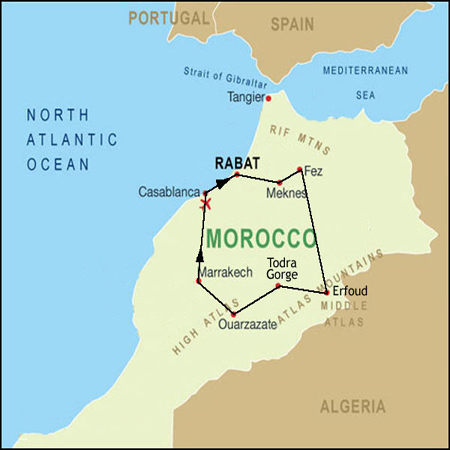
After linking up with our Insight Vacations group and spending a night in the city, we began a one-week circuit of Morocco. Before exiting Casablanca, though, the coach stopped at the huge Hassan II Mosque, one of the largest mosques in the world. It is built on a promontory, looking out on the Atlantic. Upon our return to Casablanca a week later under cloudy skies, we stopped again for photos inside and out.
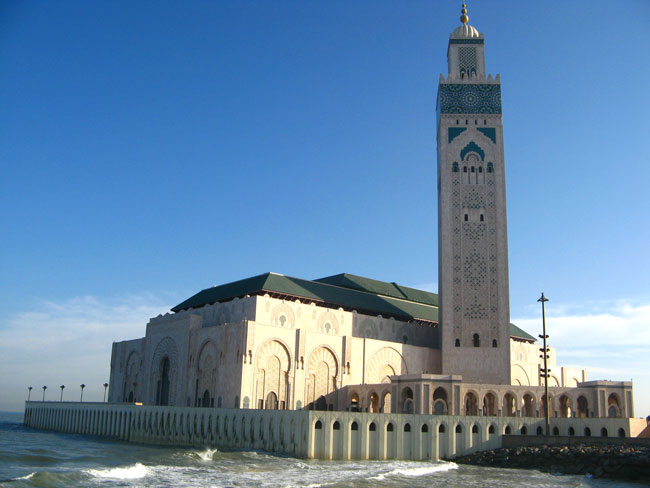

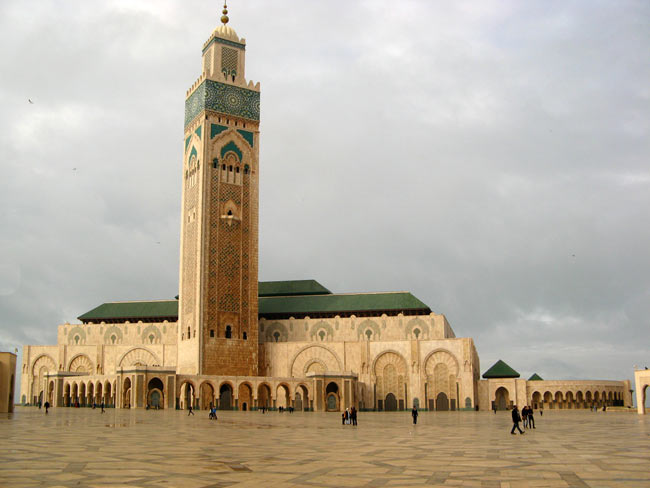
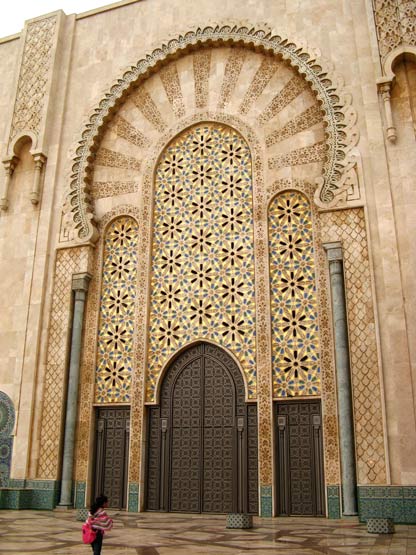
We were told this mosque can accommodate 25,000 worshippers inside. We failed to ask how often such a crowd gathers. Unlike most mosques which are located in easy reach of their congregations, this one is surrounded by substantial open space and, seemingly, is harder to reach from residential areas.
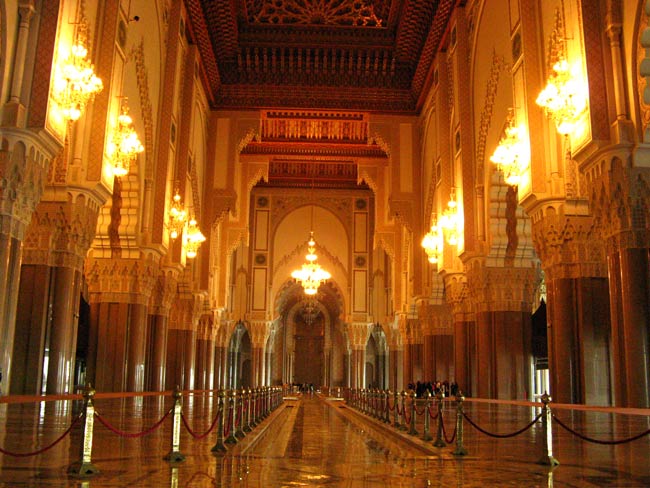
On special occasions, the two enormous ceiling panels can be slid open electrically to cool the interior and provide a view of the heavens:
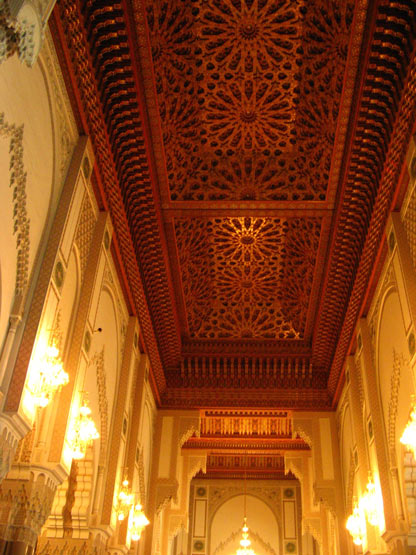
Downstairs is a cavernous ablution room for washing, only a small part of which is visible here:
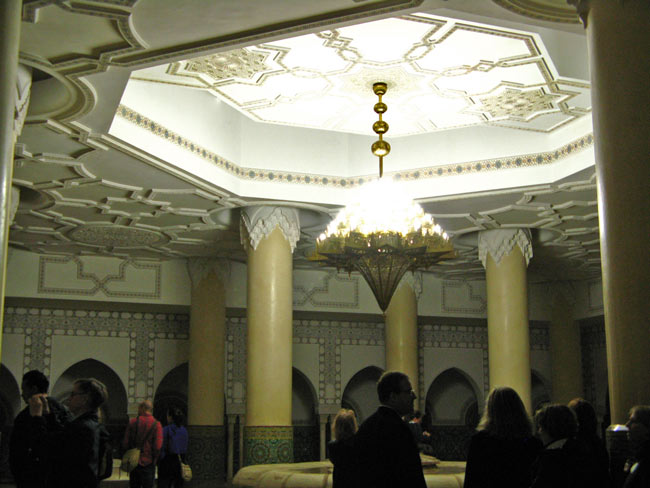
Off to one side below ground is a stunning hamam (or Turkish bath). Incredibly, this one is for show only; we were told it has never been used:

Leaving the city, we paused to stretch our legs at an attractive beachfront area on Boulevard de la Corniche --- replete with restaurants, cafes, hotels, ocean views and a manicured promenade:
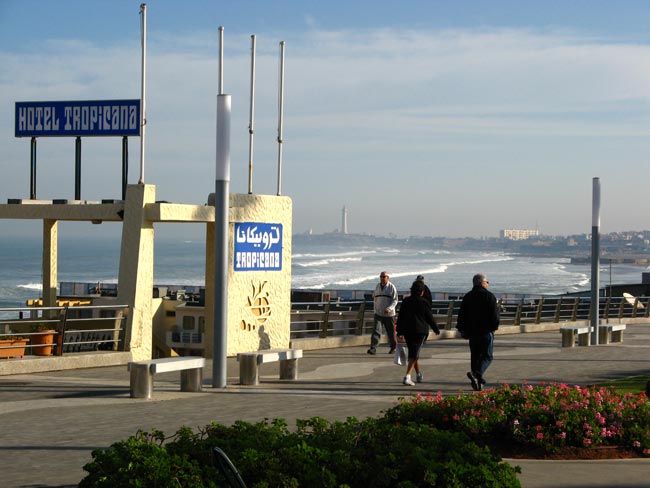
A scene such as the one below puzzled us initially but we later learned why so many sheep were being transported in small vehicles of all kinds, even in car trunks! The reason was an important Muslim religious holiday taking place that same week.
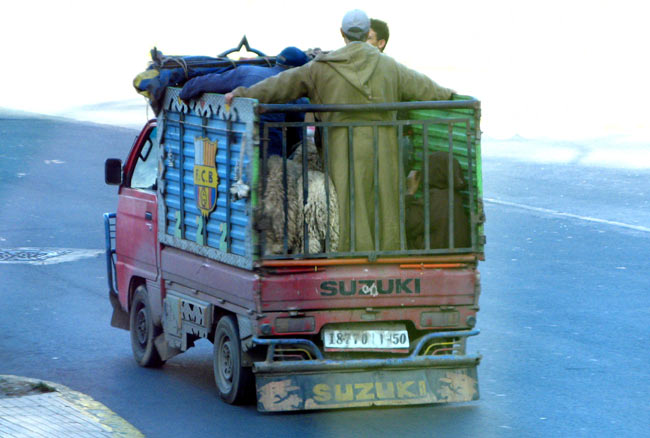
The “Festival of Sacrifice” or “Tabaski” commemorates Abraham’s willingness to sacrifice even his son at God’s command. On this day, Muslims sacrifice a sheep, dividing it into three parts to be distributed to others. The family retains one third of the share, another third is given to relatives, friends and neighbors, and the other third is given to the poor and needy.
Before the Festival, our guide stopped the coach in a store parking lot near a large tent with many people coming and going. Inside, those of us who wished could see how the sheep were sold. Not surprisingly, the price was based on the sheep’s weight, about $2.50/lb. With these sheep weighing between 110 and 200 lb, that works out to at least $300! After purchase, it was up to the buyer to figure out how to get the sheep home.